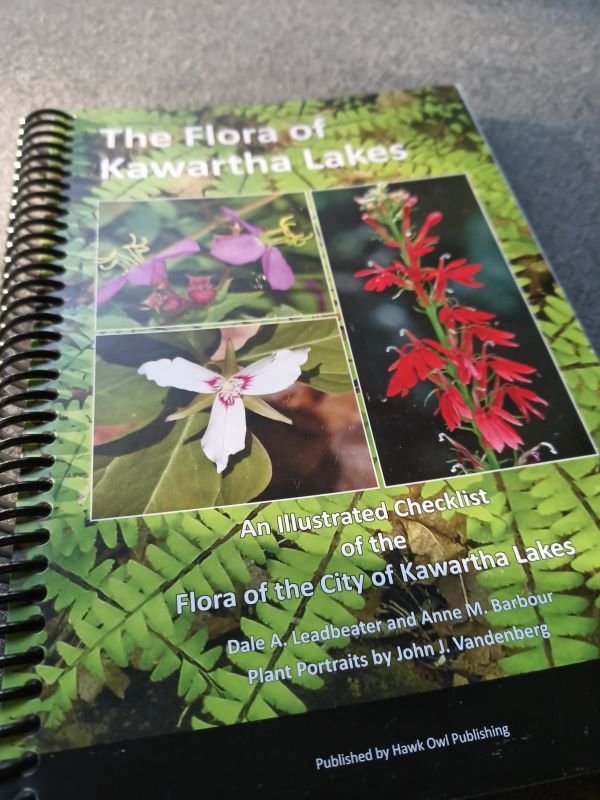
Kawartha Lakes native plants: New guide gives detailed lists
The Flora of Kawartha Lakes, which lists plants native to the region, is also relevant to Haliburton County’s flora.
Information on what is truly native to Haliburton County is scarce. We have the Skelton and Skelton book I mentioned in my Haliburton native plants article. That book was written in the 1990s and does a great job at defining what the authors found in the County. But apart from that, there are no up-to-date concrete records; most maps of native plant distribution are fuzzy at best.
So I’m glad we have a new book to help us. The Flora of Kawartha Lakes, by Dale A. Leadbeater and Anne M. Barbour, doesn’t hit the Haliburton County bullseye, but it’s pretty darn close.
County boundaries are human constructions – plants don’t abide by them. What’s more, Haliburton County is varied – the north is different from the south, and there are areas with distinct geologies and hence floras. The City of Kawartha Lakes is the same. Indeed, the north part of that district is similar to Haliburton County – looking at you, Kinmount. That’s why this book is useful.
It’s not just useful; it’s interesting. Flora is dependent on climate and geology – this book tells the story of both. Did you know, for example, that the now extinct Passenger Pigeon was responsible for a lot of the biodiversity we find in the area?
Every native plant listed
The second half of the book is dedicated to the plant list. I can only imagine the painstaking work required. Tables detail plants by City of Kawartha Lakes township – Longford, Digby and Dalton are the Shield areas of most interest to us here in Haliburton County.
This is where the book is useful for those of us with hands in the ground. I can look up a plant and see where in Kawartha Lakes it is found. If that plant is found in an area with similar characteristics to the relevant part of the Highlands, I can be pretty sure it will be at home here. For example, Aquilegia Canadensis (Red or Wild Columbine) is found in most areas, including those in the Shield. But Geranium maculatum (Wild or Spotted Geranium) – a plant commonly requested – is found only historically and then only in the south of Kawartha Lakes. So I would avoid specifying it for a garden here in Haliburton County.
The Flora of Kawartha Lakes is – ironically, perhaps – the best and most up-to-date guide we have to flora in Haliburton County. It should be on the bookshelf of anyone serious about using native plants here.
The Flora of Kawartha Lakes is published by Hawk Owl Publishing and is available here at a price of $39.
